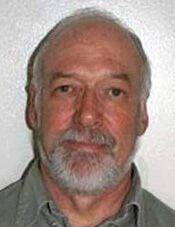We’re running out of water. We had less than an hour of rain yesterday. They keep predicting rain but it doesn’t come. Meanwhile, the aquifer drops lower and lower each year.
I put a reverse osmosis machine in our house, which takes out the chemicals. It’s only attached to the kitchen sink, but you can take a glass of fresher water upstairs to brush your teeth. And you can think about the aquifer growing lower and lower.
I used to live in places with water problems but never thought much about them. I lived 26 years in Fresno and 4 in Los Angeles. I went to college in Claremont. Now they all have water problems. “California’s Central Valley is home to 19 percent of food production in the world yet about 100,000 of its residents have lived without clean drinking water for decades. New Technologies attempt to overcome political and cost challenges in filtering toxins out of tap water in this rural region.” Los Angeles also has problems. “Despite its proximity to the Pacific Ocean, Los Angeles has not been able to tap into that abundant supply. The primary desalination process is very energy consuming and can contribute to salt imbalances in the ocean that will completely throw off the sensitive marine ecosystem.” The problems in California are repeated around the world. “1.1 billion people lack access to water and 2.7 billion experience water scarcity at least one month a year. By 2025, two-thirds of the world’s population may be facing water shortages.”
How can this be? There’s water everywhere, isn’t there? “About 71 percent of the Earth’s surface is water-covered, and the oceans hold about 96.5 percent of all Earth’s water.” But “[w]hile nearly 70 percent of the world is covered by water, only 2.5 percent of it is fresh. The rest is saline and ocean-based. Even then, just 1 percent of our freshwater is easily accessible, with much of it trapped in glaciers and snowfields.” And “two hundred years ago the world population was just over one billion. Since then the number of people on the planet grew more than 7-fold to 7.7 billion in 2019.”
Population isn’t the only problem. Wasting water is another one. “[W]asting water in a country where it may appear [that] water just magically comes out of the tap (i.e. Canada, the U.S., most developed countries), is wasting a precious, vital resource that millions (663 million, according to Water Facts: Facts About the Global Water Shortage) don’t even have clean, safe access to.”
With so much in the oceans, it would seem obvious that population should grow close to the sea. And it does tend to do so. But it isn’t easy to take fresh water from salt water. Desalination has significant problems. “[T]he process of removing salt from seawater to make it drinkable, carries a high price tag, releases unregulated chemicals into drinking water supplies, uses large amounts of energy, pollutes waterways, and threatens fisheries and marine environments, among other drawbacks. . . Desalination is a risky water supply option that actually creates more problems than it solves.”
Then what are the solutions?
Educate to change consumption and lifestyles
Invent new water conservation technologies
Recycle wastewater
Improve irrigation and agricultural practices
Appropriately price water
Develop energy efficient desalination plants
Improve water catchment and harvesting
Look to community-based governance and partnerships
Develop and enact better policies and regulations
Holistically manage ecosystems
Improve distribution infrastructure
Shrink corporate water footprints
Build international frameworks and institutional cooperation
Address pollution
Public common resources/equitable access
R&D/Innovation
Water projects in developing countries/transfer of technology
Climate change mitigation
Population growth control
Notice that desalination plants are included, even though the issue of what to do with the salt derived from desalination is a major problem. You can’t just dump the salt back in the ocean without killing a lot of fish.
Certainly conservation, addressing pollution, innovation, and improving water catchment and harvest would help. But if the climate keeps changing and rain stops coming at historic levels, none of these are final answers. Reducing the total human population may become the only real solution.
In San Miguel de Allende, the historical means of obtaining drinking water was rain catchment. This became less popular and almost completely disappeared when humans learned to drill down to aquifers, creating wells. But as population expanded, humans depleted the aquifers and left themselves with rain catchment once again. Unfortunately, this happened as climate change started, reducing the amount of rain in arid climates like San Miguel de Allende.
The irony of climate change is that while it may take water away in some areas, in other areas in creates floods, hurricanes, and tornedoes. We are at the mercy of Mother Nature, even as she is at the mercy of the environmental changes which our use of fossil fuels has caused.
 Our sources of fresh water are limited. We cannot continue to drill down without depleting all of the aquifers. There are significant issues with taking fresh water out of salt water. We have not found a way to control rainfall from the skies. The only real way is to conserve more, stop pollution, use wastewater efficiently, and raise the most significant question: why do we need all of these people who create so many problems?
Our sources of fresh water are limited. We cannot continue to drill down without depleting all of the aquifers. There are significant issues with taking fresh water out of salt water. We have not found a way to control rainfall from the skies. The only real way is to conserve more, stop pollution, use wastewater efficiently, and raise the most significant question: why do we need all of these people who create so many problems?
SOURCE: Michael T. Hertz


